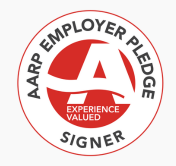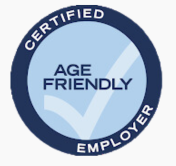Covid wreaked havoc on the caregiving community, shrinking the number of workers in childcare and eldercare post-pandemic by 37% and 15% respectively. But in its wake, the pandemic helped clear a path for what may become the most critical form of caregiving in the future – all of us. Seventy-three million baby boomers are poised to retire by 2030, many of whom have not saved enough to cover rising healthcare and eldercare costs. As they age, we will be called to care for them, possibly while also caring for our children, in an American culture where caregiving has been a hidden struggle in most workplaces. Covid may have saved the workplace… in the nick of time. The pandemic helped us understand how important caregivers are, how stubborn we have been about providing a workplace that supports caregiving, and how employers can make a reality, the critical flexibility caregivers need.
The tsunami of baby boomer retirements is here, hastened by the pandemic and early exit from the workforce of many close-to-retiring professionals. By 2034, the projected number of adults over 65 will outnumber those under the age of 18 – for the first time in history. But over 40% of boomers have no retirement savings and many more have savings inadequate for a comfortable retirement. Our caregiving systems, already laboring to support the demand for affordable, quality elder and childcare, will be further strained and out of reach for millions. The burden of closing this gap will be felt most acutely by women who continue to shoulder a disproportionate share of family caregiving. Yet by 2026, a projected 60% of college graduates will be women, and to stay competitive, employers will need to make sure they can attract and retain them.
These demographic shifts were always on the horizon, yet pre-pandemic the workplace was in denial. We saw the resistance firsthand as our company, FlexProfessionals, pitched the business case for flexibility to CEOs and hiring managers who believed flexible work arrangements were too difficult to implement at scale and too costly to sustain their workforce productivity. Not until the shock of Covid’s stay-at-home orders and the sight of empty workplace halls, did companies step into action and use their power of innovation to create flexible workplace solutions to accommodate a suddenly remote or part-time workforce. To help solidify their case, workers showed that they could still be as, if not more, productive working remotely or partly remote. Today with 27% of employee hours being worked remotely (at peak post-pandemic this was 61.5%), compared to 4.7% pre-pandemic, employers are significantly better prepared post-pandemic to support a caregiving workforce.
The pandemic also changed our caregiving mindset. Covid galvanized our collective understanding and appreciation of caregiving, largely a taboo subject at work, where mothers and fathers, sons and daughters, silently juggled caregiving responsibilities in fear of impacting their career advancement. But as the pandemic dragged on and more daycare facilities closed and retirement communities shuttered, most of us, no matter age, gender, or race, jumped into caregiving mode, home-schooling our children, shuttling and shopping for the elderly, and being at the bedside of loved ones with Covid. We made caregiving a priority and felt its rewards firsthand on a massive scale. We also looked on with awe at the courage, dedication, and sacrifices of professional caregivers who carried us through the pandemic. Caregiving became a badge of honor to be respected, not an encumbrance to hide. With a taste of more balance, many of us vowed never to lose sight of the value and gratification of caregiving again. Stubbornness around flexibility flipped from employer to employee, and we’re now seeing a significant number of job seekers and employees turning down offers or walking away from companies when they do not offer remote, hybrid, or part-time arrangements.
When we launched FlexProfessionals over a decade ago, flexibility was a perk and to some extent a privilege for those professionals who could afford to work part-time or take the career risk of working remotely. Now flexibility is an imperative, required on a huge scale as our population ages at a pace surpassing the care infrastructure to support it. The pandemic unexpectedly and suddenly opened the door wide to flexibility. But there are signs that employers are, once again, reverting to old mindsets and closing the door on remote or part-time work arrangements. The number of remote jobs has declined 35% since its peak in 2020 and even hybrid work arrangements are contracting. We as current and future caregivers need to keep our foot in the door. We need to keep the value of caregiving in the forefront, continue to talk about and make the case for flexible work options without guilt or shame, and demonstrate to employers that adapting the workplace to support caregivers is the right and smart thing to do to keep us and our business community competitive and healthy.









